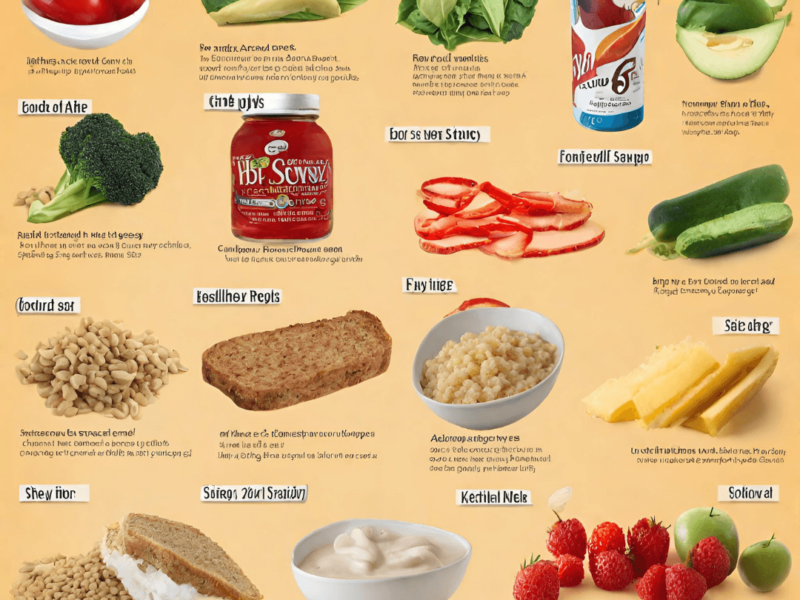Three Spine-Chilling Christmas Ailments Plaguing the UK – Recognize the Symptoms
The holiday season is a time of joy, celebration, and merriment. However, amidst the festive cheer, there are certain winter ailments that can cast a shadow over the holidays. In the UK, three spine-chilling Christmas ailments have been wreaking havoc, causing discomfort, and dampening spirits. It is crucial to recognize the symptoms and take preventive measures to ensure a healthy and enjoyable holiday season. Let’s delve into these chilling conditions and shed light on how to combat them.
The Rising Trend of Spine-Chilling Christmas Ailments
Over the years, the incidence of winter-related ailments during the Christmas season has been on the rise in the UK. As the temperature drops and the days grow shorter, people are more susceptible to certain conditions that thrive in cold weather. Frostbite, cold and flu, and Seasonal Affective Disorder (SAD) are the three noteworthy ailments that tend to plague individuals during the winter months. It is essential to be aware of the symptoms and take appropriate action to avoid falling victim to these chilling afflictions.
The Frostbite Fiasco: Symptoms, Causes, and Prevention
What is Frostbite?
Frostbite is a severe cold-weather condition that results from prolonged exposure to freezing temperatures. It occurs when the skin and underlying tissues freeze, leading to tissue damage. This can be extremely painful and may result in permanent damage if not attended to promptly.
Recognizing the Symptoms
Recognizing the symptoms of frostbite is crucial in order to take immediate action. The initial signs may involve numbness, a tingling sensation, or a burning feeling in the affected areas. As frostbite progresses, the skin may appear pale, waxy, or bluish in color. Blisters, hardened or swollen skin, and a loss of sensation are also common indications of severe frostbite.
Understanding the Causes
Frostbite primarily occurs due to prolonged exposure to cold temperatures. Factors such as inadequate clothing, wet or damp conditions, and wind chill can increase the risk of frostbite. Additionally, individuals with poor circulation, smokers, and those with certain medical conditions such as diabetes are more susceptible to developing frostbite.
Preventing Frostbite
Preventing frostbite is essential to safeguard yourself from this freezing fiasco. Dressing in layers, wearing appropriate cold-weather gear, and staying dry are key preventive measures. Limiting exposure to the cold, taking regular breaks in warm environments, and ensuring proper circulation through physical activity can also help prevent frostbite.
The Mistletoe Madness: Dealing with the Cold and Flu
The Cold and Flu Season
The holiday season coincides with the peak of the cold and flu season, making it a challenge to steer clear of these common ailments. The close proximity and festive gatherings make it easier for viruses to spread, causing sniffles, coughs, and overall discomfort during what should be a joyous time.
Common Symptoms of Cold and Flu
The cold and flu can exhibit a range of symptoms, including sneezing, coughing, sore throat, nasal congestion, and a general feeling of malaise. Fever, body aches, and exhaustion are also common signs. It is important to differentiate between the cold and flu, as the latter can be more severe and lead to complications if left unattended.
Boosting Your Immune System
Strengthening your immune system is key to fighting off the cold and flu. Consuming a balanced diet rich in vitamins and minerals, staying hydrated, and getting adequate sleep can all contribute to a robust immune system. Additionally, regular exercise and managing stress levels are essential for maintaining a strong defense against illness.
Practicing Good Hygiene
Practicing good hygiene is crucial during the cold and flu season. Regularly washing hands with soap and water, or using sanitizer if unavailable, can help prevent the spread of viruses. Avoiding close contact with individuals who are sick and covering your mouth and nose when sneezing or coughing are simple yet effective ways to minimize the risk of contagion.
The Seasonal Affective Disorder (SAD) Storm: Shedding Light on Winter Depression
What is Seasonal Affective Disorder (SAD)?
Seasonal Affective Disorder (SAD) is a form of depression that occurs mainly during the winter months when natural light is scarce. The lack of sunlight can disrupt the body’s internal clock and affect the production of serotonin, a neurotransmitter that plays a key role in regulating mood.
Recognizing the Symptoms of SAD
Recognizing the symptoms of SAD is crucial in order to seek appropriate help and coping mechanisms. Symptoms may include persistent sadness, lack of energy, difficulty concentrating, changes in sleep patterns, appetite changes, and a decrease in interest or pleasure in usual activities. Individuals with SAD may also experience feelings of hopelessness, social withdrawal, and, in severe cases, thoughts of self-harm or suicide.
Coping Strategies for SAD
Managing Seasonal Affective Disorder involves implementing coping strategies to alleviate the symptoms. Exposing oneself to natural light as much as possible, whether through spending time outdoors or using light therapy, can be beneficial. Regular exercise, maintaining a consistent sleep schedule, and engaging in pleasurable activities can also help combat the winter blues. Additionally, seeking support from loved ones and considering counseling or therapy can provide valuable assistance in dealing with SAD.
Seeking Professional Help
If the symptoms of SAD become overwhelming or interfere significantly with daily life, it is essential to seek professional help. Mental health professionals can provide diagnosis, evaluation, and appropriate treatment options such as therapy or medication. Remember, reaching out for support is a sign of strength, and help is readily available.
Conclusion
As the holiday season approaches, it is important to be aware of the spine-chilling Christmas ailments that can plague individuals in the UK. Knowing the symptoms, understanding the causes, and implementing preventive measures are crucial steps in maintaining good health and well-being. Whether it is frostbite, the cold and flu, or Seasonal Affective Disorder (SAD), taking care of yourself and seeking appropriate support is essential. With the right knowledge and proactive approach, you can ensure a festive season filled with warmth, joy, and good health.
FAQs
FAQ 1: Can Frostbite be reversed?
Yes, frostbite can be reversed if attended to promptly. By gradually warming the affected area using warm water (not hot), seeking medical assistance, and following the guidance of healthcare professionals, it is possible to prevent further damage and promote healing.
FAQ 2: Can you get the flu from the cold weather?
Contrary to popular belief, cold weather itself does not cause the flu. However, during the winter months, people tend to spend more time indoors in close proximity, which increases the likelihood of viral transmission. Practicing good hygiene, getting vaccinated, and boosting your immune system are effective ways to minimize the risk of flu infection.
FAQ 3: Is Seasonal Affective Disorder only experienced during winter?
Seasonal Affective Disorder (SAD) predominantly occurs during the winter months when there is less exposure to natural light. However, some individuals may experience a similar condition called “summer SAD” where symptoms, though less common, manifest during the warmer months. It is important to note that the majority of SAD cases are triggered by winter darkness.
Love Blooms on Set: Cameron Diaz and Jude Law’s Romance during The Holiday Shoot
Un nouvel espoir pour les victimes de la maladie de Bruce Willis

